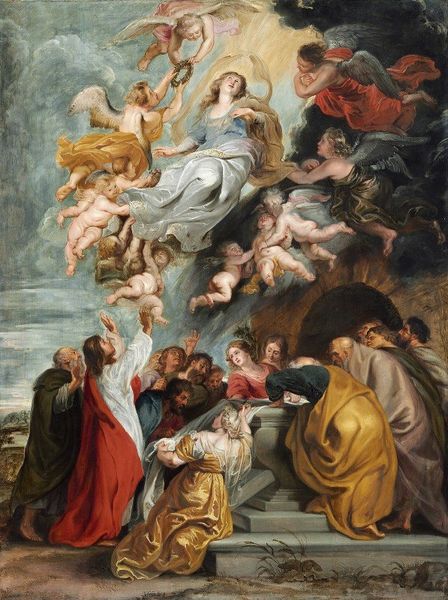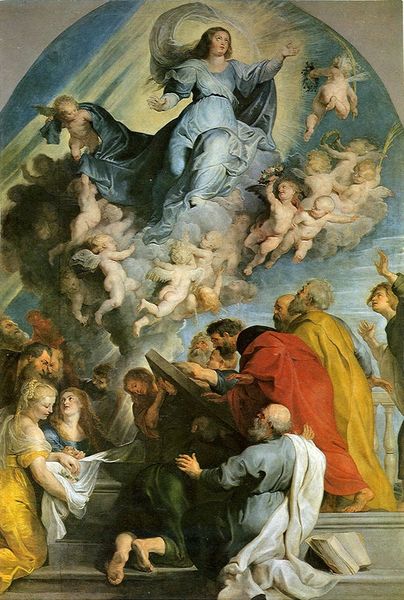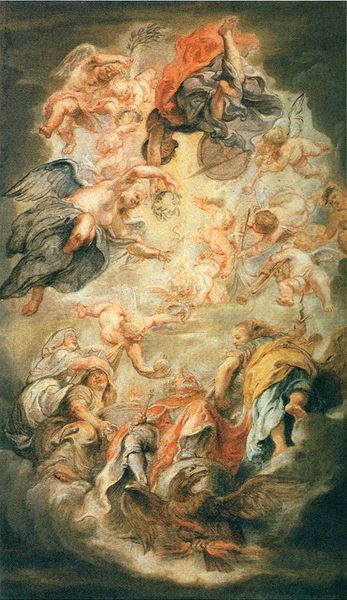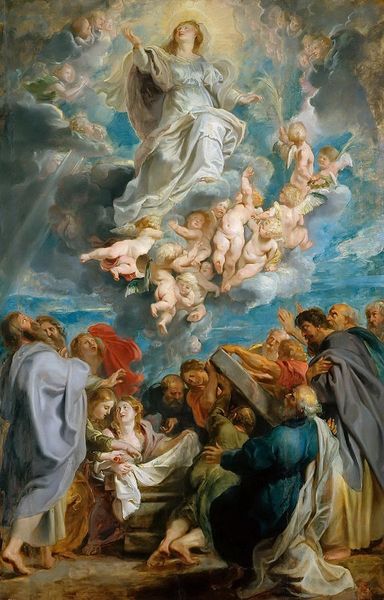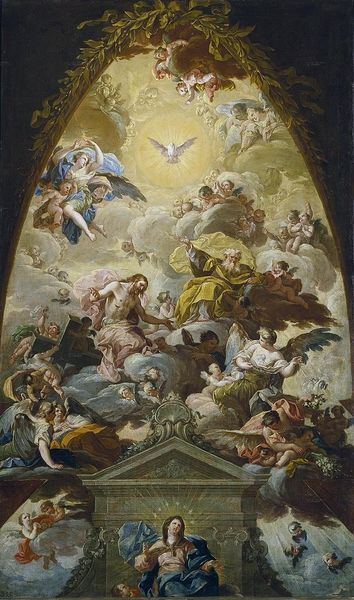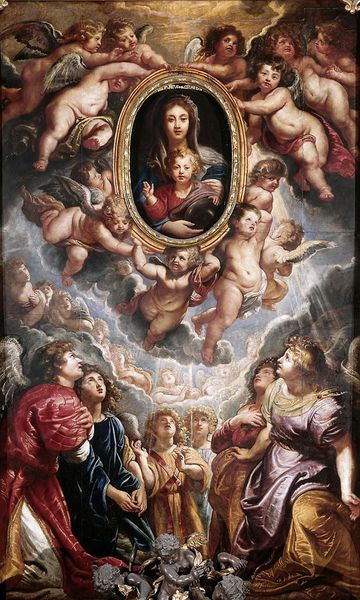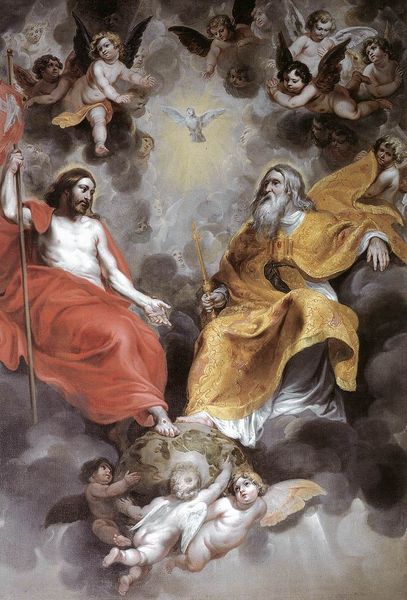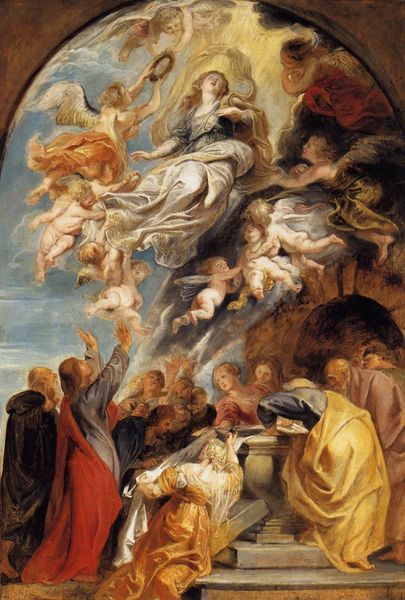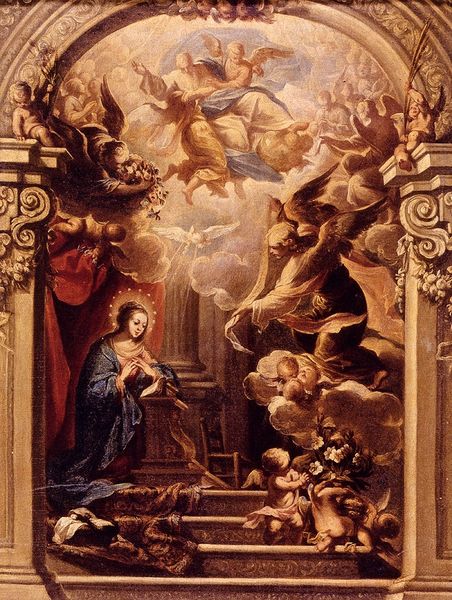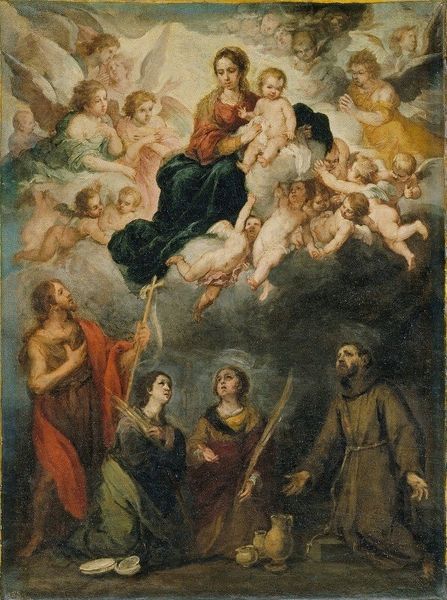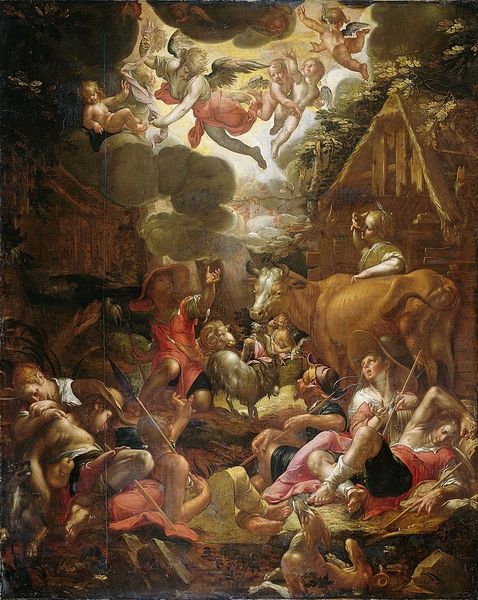
The Madonna della Vallicella Adored by Seraphim and Cherubim 1608
0:00
0:00
peterpaulrubens
Academy of Fine Arts Vienna, Vienna, Austria
painting, oil-paint
#
portrait
#
baroque
#
painting
#
oil-paint
#
figuration
#
oil painting
#
group-portraits
#
christianity
#
history-painting
#
italian-renaissance
#
virgin-mary
Dimensions: 119 x 86 cm
Copyright: Public domain
Curator: Peter Paul Rubens’ “The Madonna della Vallicella Adored by Seraphim and Cherubim,” painted in 1608, captures a scene of heavenly adoration. The work currently resides at the Academy of Fine Arts Vienna. Editor: My first impression is the sheer luminosity—it feels as though the painting emits light itself, with a softness emanating from the clouds and the cherubic figures surrounding the Madonna. Curator: Indeed, and consider the historical context: Rubens painted this during the Counter-Reformation, a period where the Catholic Church sought to reaffirm its spiritual authority. Paintings such as this were crucial, serving as visually potent tools to evoke piety and reaffirm the sanctity of religious icons like the Virgin Mary. The theatricality is carefully calculated. Editor: I agree, the dramatic composition lends itself well to that, using Baroque principles to create an overwhelming experience. The movement suggested by the swirling clouds, the dynamism of the angels—it directs your gaze centrally towards the iconic Madonna and Child. Look at how the cherubs almost seem to float, their bodies plump and idealized, rendered with incredibly soft brushwork. Curator: Absolutely, and note the earthly figures below gazing upward. Their inclusion is not simply aesthetic; it bridges the divine and the earthly, creating an aspirational connection. This painting becomes an invitation to viewers, imploring them to join in the act of devotion and embrace a faith-based social structure. The artist paints from his patrons and social contacts into the artwork. Editor: The mirroring going on here is so key! There's the literal mirroring of cherubic forms but then, more fundamentally, the mirroring that takes place between earth and heaven. That reciprocity is visualized. But what does that oval represent within the clouds—is that also a mirror to suggest yet more realities at play? Curator: Perhaps. I see in that mirrored oval a statement regarding our subjective vision and an appeal to experience this social system under the eye of faith. The use of allegory—the figures representing virtues or the absence of the virtuous—helps paint a narrative intended to reinforce faith-based understanding. It's propaganda. Editor: Regardless of its religious narrative and undertones, I cannot but admire Rubens' mastery in capturing light and motion. The color palette, dominated by warm tones, creates a sense of euphoria that speaks volumes about his technique and its relation to beauty, an enduring component of the Renaissance and its rebirth. Curator: I concede, its undeniable artistic accomplishment contributes greatly to the ongoing study of art and social theory through an artist's works and techniques. Editor: Well, whether from its compositional expertise or historical significance, “The Madonna della Vallicella Adored by Seraphim and Cherubim” provides insights on art history that only centuries of dialogue can answer.
Comments
No comments
Be the first to comment and join the conversation on the ultimate creative platform.
